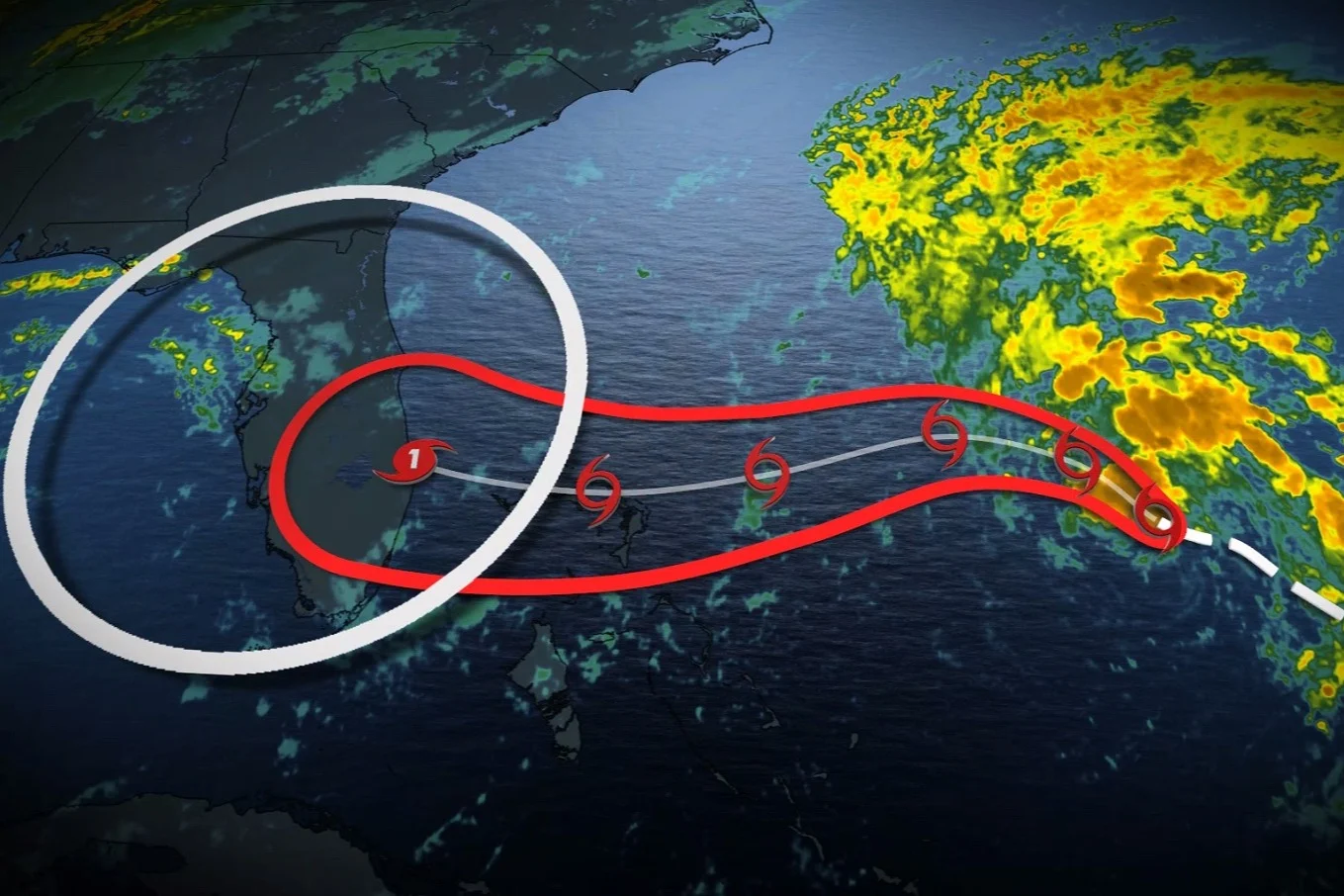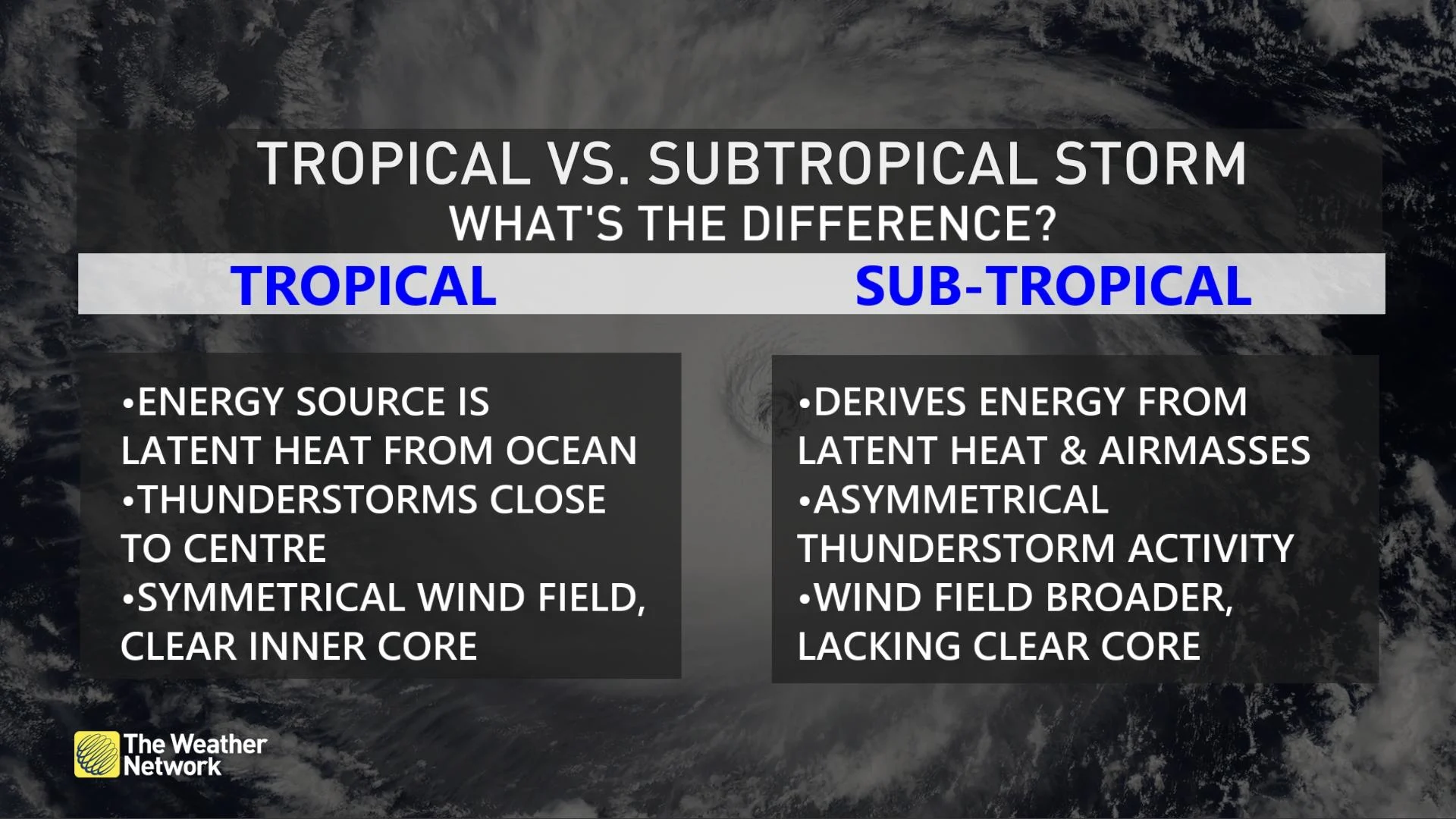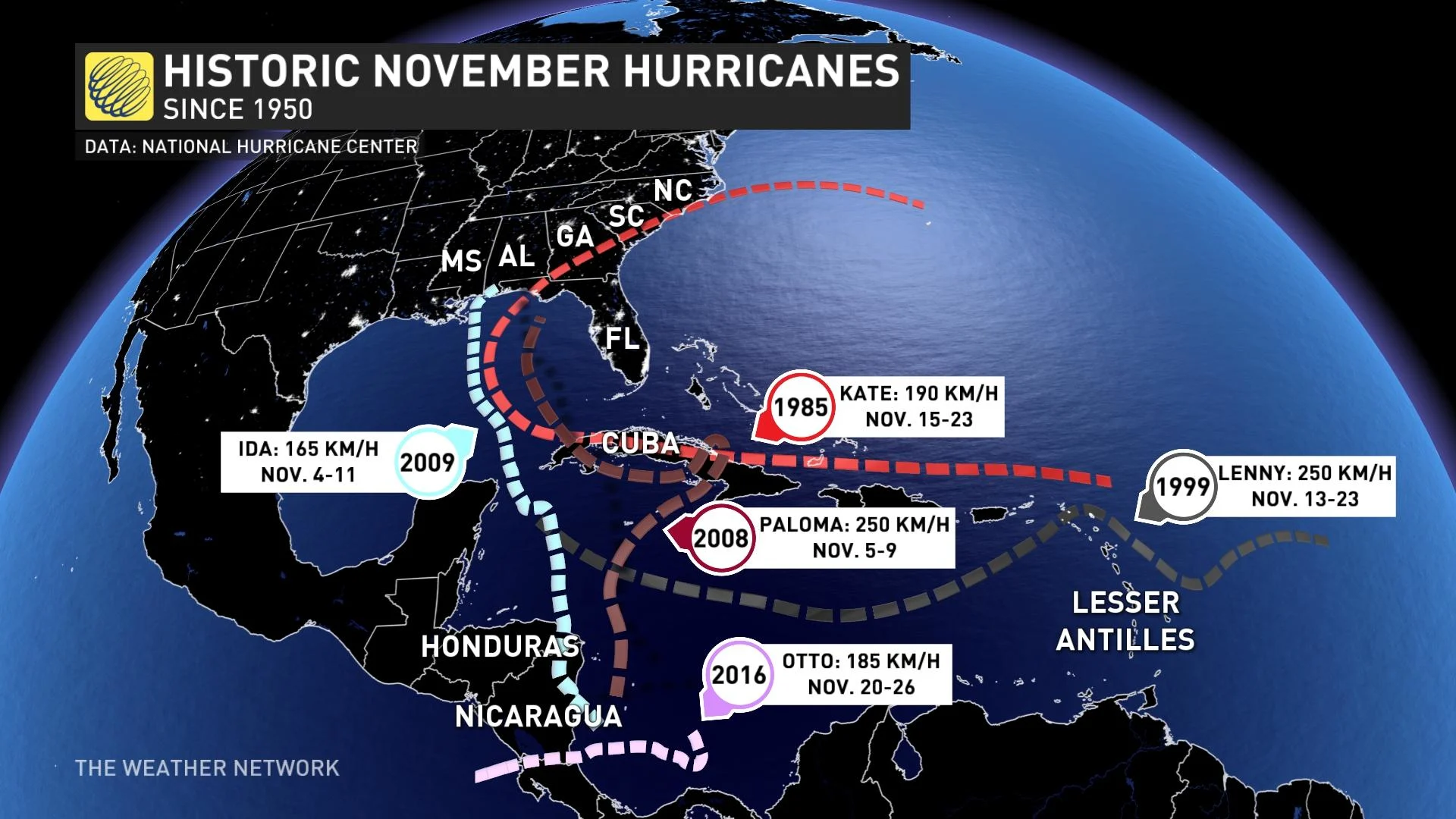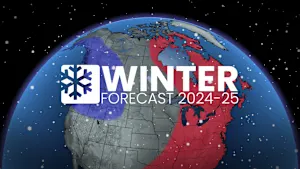
Nicole gaining power as it puts Bahamas and U.S. in its crosshairs
Currently a subtropical storm in the Atlantic, Nicole carries the risk of coastal flooding, tropical storm- or hurricane-force winds, heavy rainfall and storm surge for much of the southeastern U.S. coast including eastern Florida, and portions of the Bahamas, this week.
The Atlantic hurricane season may be nearing its end, but there is still the potential for a powerful storm to develop.
The U.S. National Hurricane Center (NHC) is keeping a close eye on two potential systems, one of which is expected to have impacts on the southeastern U.S. and the Bahamas by mid-week.
SEE ALSO: How hot water fuels the world’s most powerful hurricanes
Subtropical Storm Nicole developed north of Puerto Rico Monday morning.
Although Nicole is currently a subtropical storm, it still carries the risk of coastal flooding, tropical storm- and hurricane-force winds, heavy rainfall and storm surge for much of the southeastern U.S. coast including eastern Florida, and portions of the Bahamas in the days ahead. By Wednesday, Nicole will likely shed its subtropical characteristics.
Hurricane and tropical storm warnings, as well as watches, are in effect for portions of the Bahamas and Florida coast. There is also a storm surge watch in place for parts of the southeastern U.S. coast.
On the forecast track, the centre of Nicole will approach the northwestern Bahamas on Tuesday, move near or over those islands on Wednesday, and approach the east coast of Florida Wednesday night.
It will make landfall in Florida, but it's not known whether it will be as a strong tropical storm or a weak hurricane.

If it landfalls as a hurricane on Florida's east coast, it would be the first to do so along that stretch of coastline in 17 years. The last hurricane to make landfall across eastern Florida was Katrina in 2005.
Maximum sustained winds are near 75 km/h with higher gusts. Some slight strengthening is forecast Monday night or Tuesday, with a faster rate of strengthening expected Tuesday night and Wednesday. Nicole is forecast to be at or near hurricane intensity by Wednesday night while it is moving near or over the northwestern Bahamas.
What is noteworthy about Nicole is its wind field, which is expected to be considerably large in part due to its subtropical origins.
Nicole is expected to produce some hefty rainfall amounts through Thursday.

Northwestern Bahamas, and the central and northern portions of the Florida Peninsula can expect to see 50-100 mm, with local maximum amounts of 150 mm. Coastal areas of southeast Florida may see 25-75 mm, with local maximum amounts of 125 mm.
Heavy rainfall from this system will spread north across the southeastern U.S. late this week.
Meanwhile, storm surge could raise water levels by as much as 1.2 to 1.8 metres above normal tide levels along the immediate coast of the northwestern Bahamas in areas of onshore winds.
The 2022 Atlantic hurricane season will end on Nov. 30.
Frequency of November storms
While November doesn't produce Atlantic hurricanes every year, they have occurred during the season's final month in multiple years. In fact, from 1950-2021, the average has been one produced every three years.

Only a handful of hurricanes have formed in the Atlantic basin since 1950. Most notably:
Nov. 15-23, 1985: Hurricane Kate, with wind gusts of 190 km/h
Nov. 13-23, 1999: Hurricane Lenny, with wind gusts of 250 km/h
Nov. 5-9 2008: Hurricane Paloma, with wind gusts of 250 km/h
Nov. 4-11, 2009: Hurricane Ida, with wind gusts of 165 km/h
Nov. 20-26, 2016: Hurricane Otto, with wind gusts of 185 km/h
It was noteworthy to have two simultaneous hurricanes churning in the Atlantic in November. Hurricanes Lisa and Martin made it the third year on record to attain the feat, the first time since 2001. If two additional systems develop this month, it will tie with 1961 for being the most active November on record.
Stay tuned to The Weather Network for the latest developments on the Atlantic hurricane season.










